Apple variety White filling
Apple-tree varieties White filling is well known to Russian gardeners. The analogue of the variety has recently been mistakenly called Papirovka, although as early as 1937, the "Reference Guide to Fruit Growing for Agronomists" gave various descriptions of these varieties. In the latest descriptions of "Pomology", published in Oryol in 2005, these varieties are positioned as one. In the variety descriptions of recent years, the characteristics of varieties are almost always given in comparison. Experienced breeders and gardeners never made a particularly strict distinction between the two varieties, considering that Papirovka was obtained in the Baltics as a seedling of White filling. In the Baltic nurseries of the Soviet period, apple trees were even called differently: Papirovka - Popierinis, and White filling - Baltasis Alivinis.
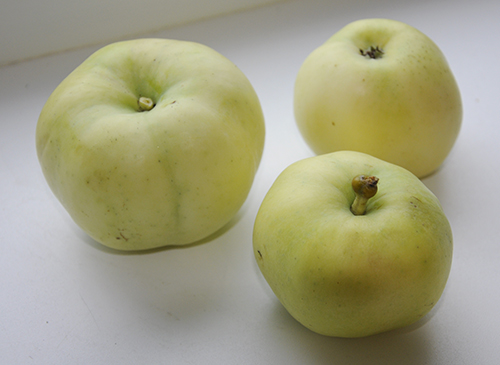
White filling is considered an early variety of Russian selection; in different regions of Russia it has different names, such as Dolgostebelka, Pudovshchina, Bel.
Variety characteristics
Height apple trees White filling reaches 4 - 5 meters, which is considered an average size.
Crown the tree is broad-pyramidal at a young age, acquires roundness as it grows.
Bark color - light gray. The fruits concentrate mainly on the annelids.
Apple tree covered leaves medium size, more often elliptical, sometimes ovoid. On the underside, the leaves are more pubescent than on the top, which gives a matte shade to their gray-green color. Pale-colored leaf petioles are usually elongated.
A characteristic feature of the variety White filling has always been large with white or slightly pinkish petals flowers... The level of the anthers is slightly lower or flush with the pistil.
Fruit rounded-conical, smoothly tapering towards the calyx, isosceles, greenish-white, with a slight blush on the south side. The apple has a characteristic seam (skin fold), its brightness is less pronounced than that of Papirovka. As the tree matures, the fruits become smaller, among them heterogeneous ones are more common. The average weight of an apple from an adult apple tree is 60 grams, from a young apple tree - 120 - 150 grams. The whitish bloom lingers on the apples until they are taken off. Large greenish, sometimes white dots appear under the thin delicate skin. The fruit rests on a long stalk. The apple has a slight rustiness in a wide and deep funnel. A closed cup is crowned with a narrow and shallow saucer. Angular, short, light brown seeds ripen in open chambers connected by a conical tube to a calyx.
Apples are tender, white, coarse-grained, loose pulp... The taste is sweet and sour without excess acid, aromatic. In case of overripening, the pulp begins to acquire a mealy, turning into a cottony consistency.
Chemical composition:
- pectin substances - 10%;
- the amount of sugars - 9%;
- ascorbic acid - 21.8 mg / 100 g.
Ripening and eating fruits
Variety White filling in central Russia matures almost completely by 25 August. Fruit picking is done twice. The first time - closer to 5 - 10 August, the second to 20 - 25.
Apples are often damaged by the moth: if agricultural practices are not followed and the harvest is delayed, almost the entire crop can turn into a carrion. The thin, delicate skin of apples is sensitive to shock and touch: within a few minutes, dark marks appear under it. Apples with dark subcutaneous spots are prone to rotting.
Low keeping quality - only 15 - 20 days.
Apples are extremely difficult to transport, therefore, the variety is more often used in private households, where the fruits can be either eaten or processed immediately.
White filling ripens a little later than Papirovka, but much earlier than other early maturing varieties. Due to the early ripening period, apples require processing almost immediately.
They are usually used to make juices, wines and liqueurs. Looseness and early ripening do not allow harvesting winter compotes from them.
After five to six years, the trees begin to bear fruit, the yield of young well-groomed apple trees can reach 200 kg, with age, when the fruits are chopped, the harvest decreases.
The variety gained its wide distribution in the conditions of central Russia due to the exceptional winter hardiness trees. (Papier, in comparison with the White filling, is more prone to freezing, especially in low places).
Pros of the apple tree
The advantages of the apple tree include high yield (not without reason the second name of the variety is Pudovshchina), early ripening (for 6 years), early ripening (until August 25) and resistance to freezing.
Cons of the apple tree
The disadvantages of the White filling variety are most often called poor transportability, low keeping quality (change in the properties of the pulp), rapid susceptibility to decay. For private farms, the disadvantages can be attributed to the very quick return of fruits: a large harvest cannot be collected and processed all in three weeks of ripening.
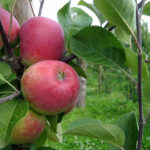

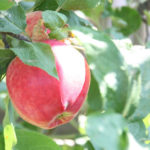
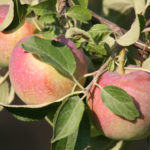
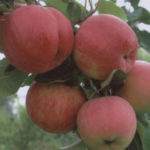
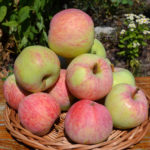



Thank! The description corresponds to what was in Soviet books - without the newfangled advertising embellishments for the sake of the time. It is especially pleasant that a clear difference from Papirovka is highlighted again,incl. and winter hardiness. We (Ust-Kamenogorsk) have White filling, but Papirovka does not.
Where in Ust-Kamenogorsk you can find cuttings of "White filling" for grafting?
Excellent description of the variety! Unambiguously determined, finally, what kind of apple tree grows on my purchased plot.
By the way, the only one in the district - we have a very high level of groundwater. all the other apple trees in the plots of both me and the neighbors died.
The taste is of course so-so, but at least this ...
The variety is good for summer consumption. In the Azov region, apples ripened by the end of July - beginning of August. The taste is not bad, slightly sour, but nothing special. Fruits are medium-large, sometimes larger than a fist. A very "tenacious" variety - this is another advantage, besides early maturity. The tree did not freeze, it gave good harvests, despite the fact that once it was almost completely (two branches and half of the trunk survived) devoured by a woodworm. The apple tree fully recovered in the third year. Unpretentious. The problem of poor keeping quality can be solved by cooking preserves and jams. My kids were happy to eat apples straight from the tree until the later varieties matured. The big disadvantage is that if an apple falls or is damaged on a tree branch, it immediately starts to deteriorate, sometimes even on the tree itself. Sometimes it was necessary to remove unripe fruits, so as not to go to the compost heap. Unripe, they are harsh and rather sour.
Recently I learned that the apples are spoiled, the scavenger can be laid out among the tomatoes. Apples help tomatoes ripen faster. And in the fall, they can be dug into shallow grooves in the same tomato beds.
White filling is a classic variety. These apples are the first to ripen in our Donbas, at the end of June. Juicy, with a sweet and sour taste. There is one drawback - they are poorly stored. However, they make excellent juice, I especially like it when you make it on a juicer.
Together with ranetka in the south of North-West Russia, these are the first harvests of apples. The tree is tall, but you can form it quite compactly. When processed with vitriol, most pests are destroyed, including scab, due to which the fruits lose their appearance. By renewing the tree and feeding, you can consistently get large and beautiful apples. Of course, they do not differ in keeping quality and are very tender, but they taste great and are excellent in processing.
We have time to process the entire crop.Part of the fruit goes to quick jams and summer jams. Most of the harvest goes to the preparation of juice in a juicer with the addition of ranetka, which is sweeter, but it is during cooking that the pungent taste is lost, the juice becomes softer and healthier. And I would like to separately note that it is from this apple variety that the best homemade vinegar with honey is obtained!
On our plots, White filling and Ranetka are often grafted onto one tree, and this amount of harvest is quite enough both for food in the form of the first summer apples, and for seasonal harvesting.
Although this variety is considered one of the most unpretentious and fruitful, I had to work hard to get my apple tree to bear fruit. She was already eight years old, if not nine, and she did not bear fruit or even bloom. We were already thinking about cutting it out. But someone suggested this way to make it bear fruit: to drive a couple of nails into the trunk. And this barbaric method has borne fruit. Rather, the apple tree began to give fruit! And how abundant! In the summer, we even put props under the branches bent from the fruit so that they do not break. In my garden, she is the first to keep up - somewhere in the first week of August. There are so many fruits that I do not have time to process everything. I like the taste at first, until it became cottony, but then, when the apples are already loose, I use jam for cooking. The jam is amazing, like marmalade!
Excellent jam and jam - a summer variety along with a pear tree - in the fall we collect an autumn striped jam, then Antonovka - a light jam at the filling, a dark jam at a striped one!